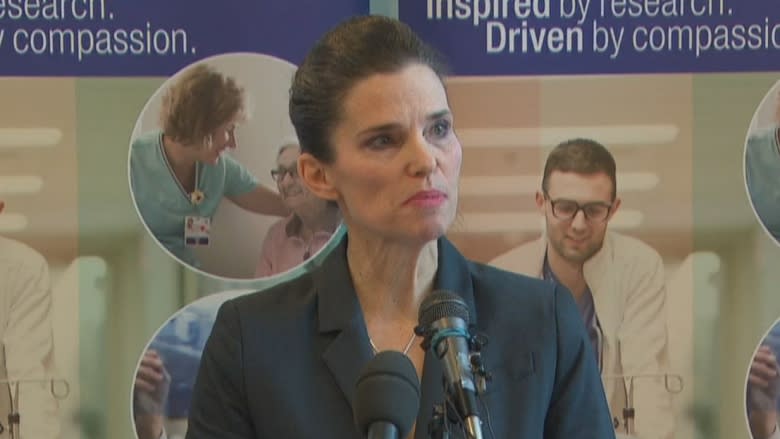Climate change scientists fight for funding to save High Arctic lab
Some of Canada's leading climate change scientists are fighting to keep the country's northernmost research station in operation.
The Polar Environment Atmospheric Research Laboratory (PEARL) in Eureka, Nunavut, tracks atmospheric data that no other research station can, given its High Arctic latitude, only 1,110 kilometres from the North Pole.
There, researchers study ozone depletion, and how the thawing Arctic is contributing to climate change, as well as other polar science.
But with PEARL's core funding set to run out this year, scientists are warning if PEARL closes, there's no filling the void.
"You're in this part of the world that's very significant for all these different global environmental challenges," said Dan Weaver, a PhD student at the University of Toronto who has conducted research at PEARL since 2012.
"From climate change to ozone depletion, to even transport of pollution — we have that unique piece of the puzzle to offer the world."
PEARL has been funded for the last five years by the Climate Change and Atmospheric Research Initiative, but the federal government has not renewed that program.
Scientists say there aren't other funding sources that PEARL can tap into because its work is so specific in terms of its atmospheric research mandate.
Weaver is part of Evidence for Democracy, a not-for-profit group that's launched a petition calling on the federal government to commit to $1.5 million in annual funding for PEARL.
Scientists say if they can't get more funding, they will have to pull the plug on the research station in May.
Harper government's 'war on science'
This isn't the first time a funding shortfall has threatened the future of PEARL.
In 2012, cuts under the Harper government saw researchers come within 20 days of beginning a shutdown of the laboratory, until last-minute funding came through from the Climate Change and Atmospheric Research Initiative (CCAR).
One of the more vocal proponents to try to save PEARL at the time was Liberal MP Kirsty Duncan — now the federal minister of Science.
"This is a government that has a war on science, a war on the environment," Duncan said of the Harper government in the House of Commons on Oct. 29, 2012.
"The government has cut the Polar Environment Atmospheric Research Laboratory in the far North, which looks at ozone, at climate change. This year we have had the greatest melting, ever, of sea ice in the High Arctic. Last year, an ozone hole was discovered that was two million square kilometres.
"Why would the government cut a research station at a time when major environmental changes are taking place?"
Duncan even presented a petition earlier that year for the Harper government to fund PEARL.
'A comprehensive approach'
Asked Friday why her government is now cutting funding to the same research station she fought to save, or what's changed since her plea, Duncan sidestepped the question, saying she's working on "a comprehensive approach."
"I've been many times to the Arctic. That's why I'm so focused on creating a comprehensive, thoughtful approach to Arctic research, and one that will include Indigenous voices," Duncan told CBC.
"The previous government used [the Climate Change and Atmospheric Research Initiative] as a one-off solution to climate change. I am working on a comprehensive approach along with my colleagues."
Duncan did not say whether her approach includes saving PEARL.
One-of-a-kind station
Duncan also mentioned the new Canadian High Arctic Research Station (CHARS) in Cambridge Bay, Nunavut, as an example of the government's commitment to climate change science. Scientists say, while there's nothing wrong with CHARS, it won't fill the void left by PEARL.
"The distance between those two stations is enormous," said Dalhousie University's Jim Drummond, the lead investigator at PEARL.
"It's roughly the distance from Toronto and Atlanta," he said. "Anybody who thinks you can make statements about what's going on in Toronto by measuring things in Atlanta, I think would be laughed out of court."
PhD candidate Dan Weaver says CHARS just doesn't have the same mandate as PEARL.
"There's this whole suite of instruments at PEARL that measure the atmosphere, and also contribute the northernmost data sets to a variety of international networks," Weaver said.
"Those instruments are not at CHARS and they're not planned to be at CHARS because it doesn't have that research mandate to do atmospheric work."
In April 2017, the Natural Sciences and Engineering Research Council of Canada (NSERC), the body that divvies up physical science funding to researchers, universities, and scientists across the country, recommended the government continue funding to study climate change and the atmosphere through the Climate Change and Atmospheric Research Initiative.
"Without these funds ... certain research sites, such as the Polar Environment Atmospheric Research Laboratory, would no longer exist," the organization reported.
"Such research locations are considered critical to understanding and predicting changes in the climate and atmosphere, as they provide opportunities to collect large amounts of data and/or continuous data that may be used for comparison with other countries and/or over time."



